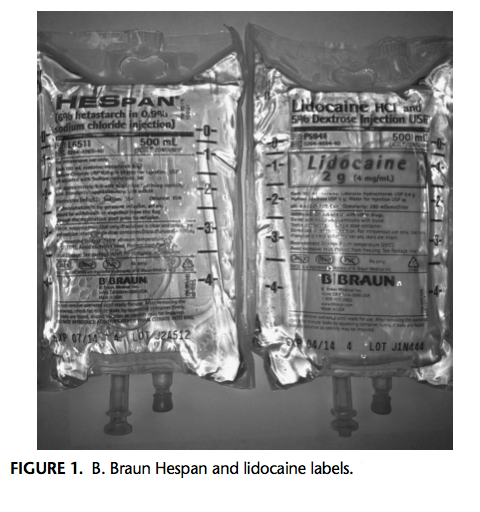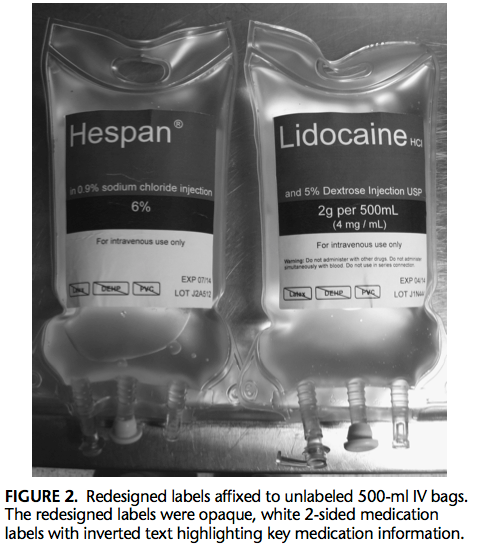Article
Label Redesign Could Reduce Catastrophic Medication Errors
Author(s):
Making intravenous bag labels more legible could prevent medication errors during high-stress clinical situations.
Making intravenous (IV) bag labels more legible could prevent medication errors during high-stress clinical situations.
Inspired by a real-life near miss, researchers from the VA Pittsburgh Healthcare System recently observed 96 trainees selecting an IV anesthetic in a simulated medical emergency.
The trainees were randomly assigned anesthesia carts containing 3 500-mL IV bags of hetastarch (Hespan) and 1 500-mL IV bag of lidocaine with either current labels or ones redesigned with feedback from pharmacists, anesthesiologists, and nurse anesthetists. Each participant was asked to select hetastarch from the cart and then administer to minimize blood loss.


During the simulation, 63% of trainees given IV bags with the redesigned opaque, white, 2-sided labels correctly chose the hetastarch, compared with 40% of those given bags with the current transparent labels. Additionally, 60% of trainees assigned the current labels incorrectly selected lidocaine from the cart, compared with 37% of those assigned the redesigned labels.
“The redesigned labels helped participants correctly select hetastarch from the cart, thus preventing some potentially catastrophic medication errors from reaching the simulated patient,” the authors concluded. “…Further research should continue to evaluate published label design recommendations with the goal of providing empirical evidence to support the adoption of those recommendations that show a measurable improvement on medication safety.”
Based on the current study’s results, which were recently published in the Journal of Patient Safety, VA Pittsburgh’s pharmacists have “redesigned the labels they place on medications compounded in-house for use in the operating room,” lead study author Jamie L. Estock, MA, told Pharmacy Times in an email.
“Pharmacists can help usher in measurable improvements to medication safety by adopting a systems approach to addressing medication error, (which) focuses less on fixing individual clinicians involved in the error and more on redesigning the products that they use and the environments in which they work,” Estock said. “If the redesigned label reduced the number of selection errors in a high-stress clinical situation, could it have an even greater effect on the number of stocking errors that led up to this incident?”





